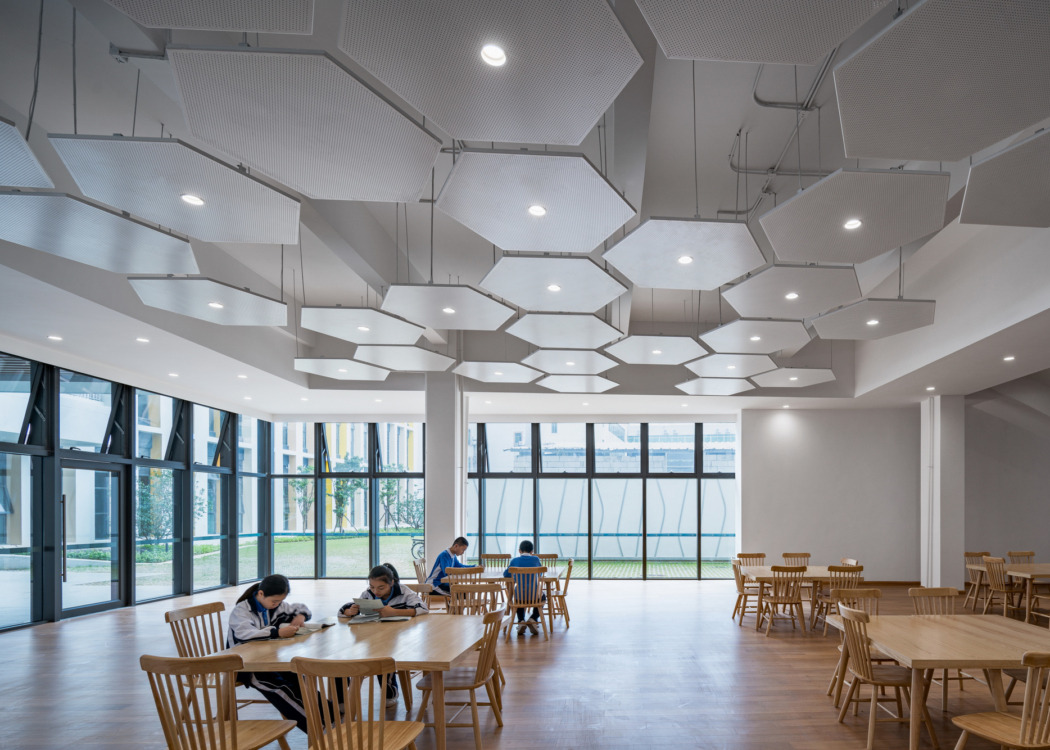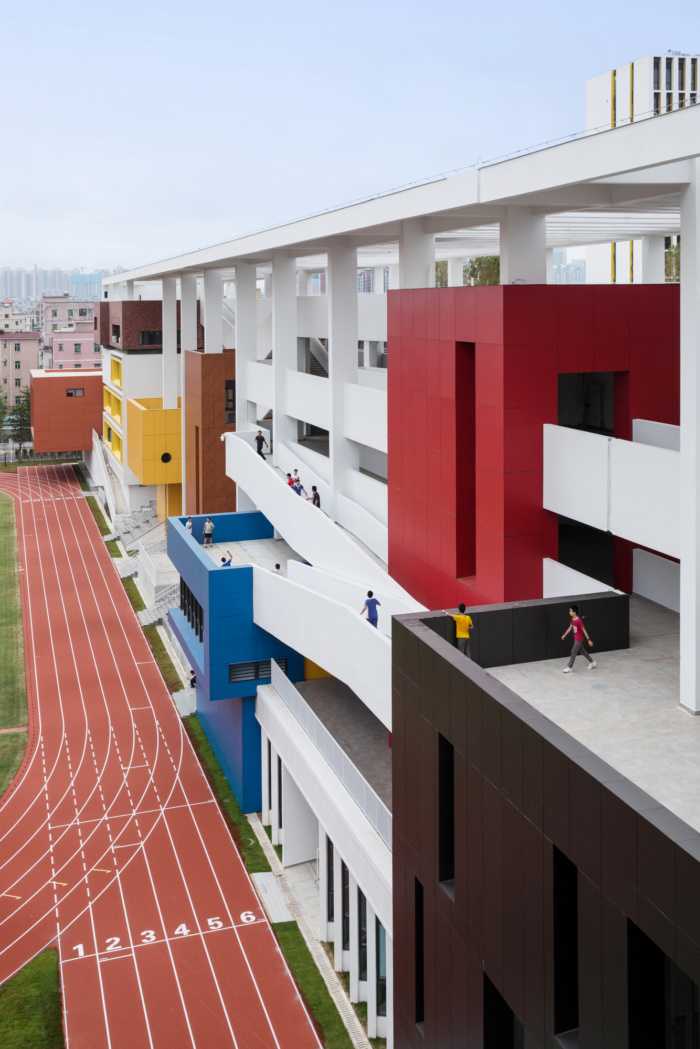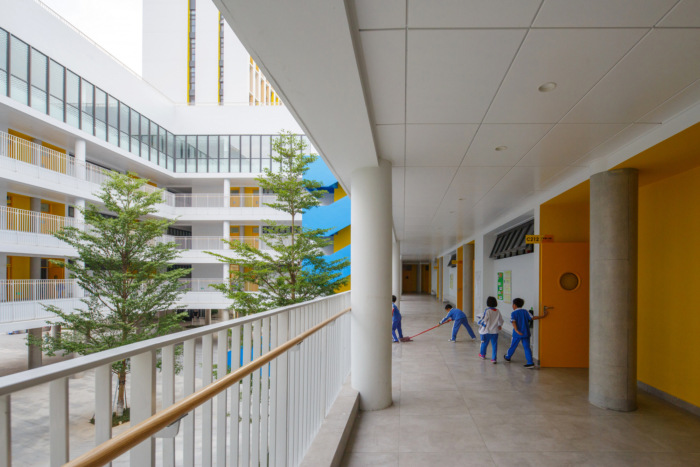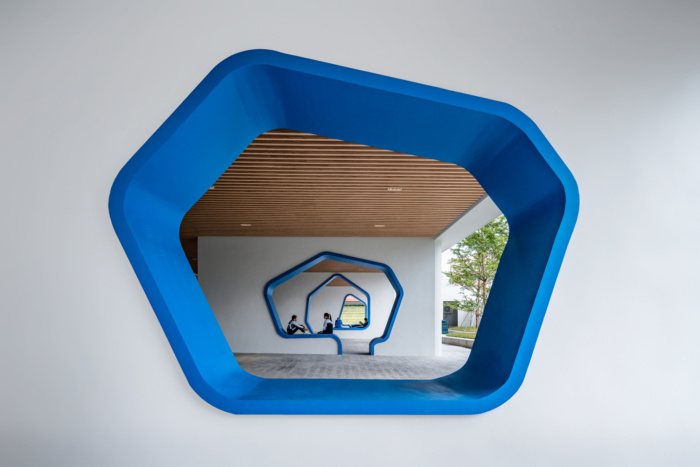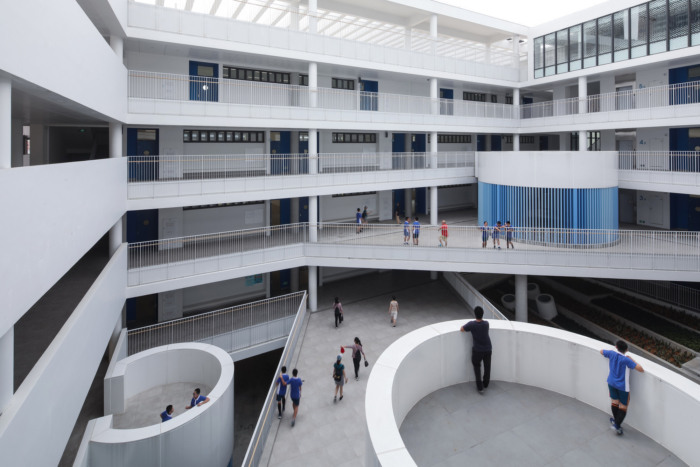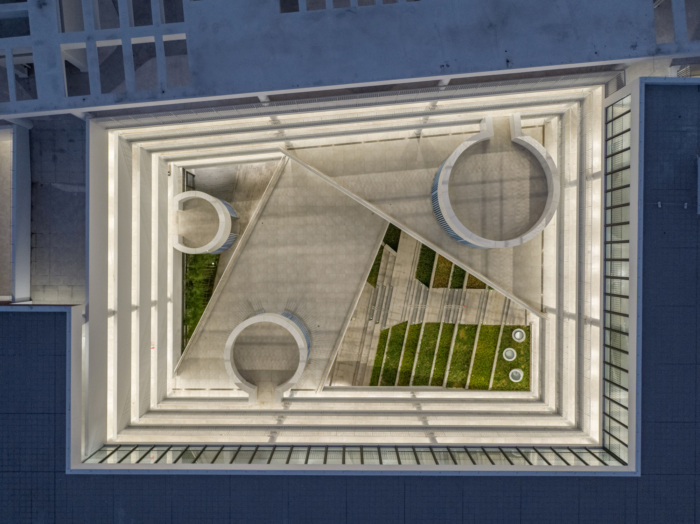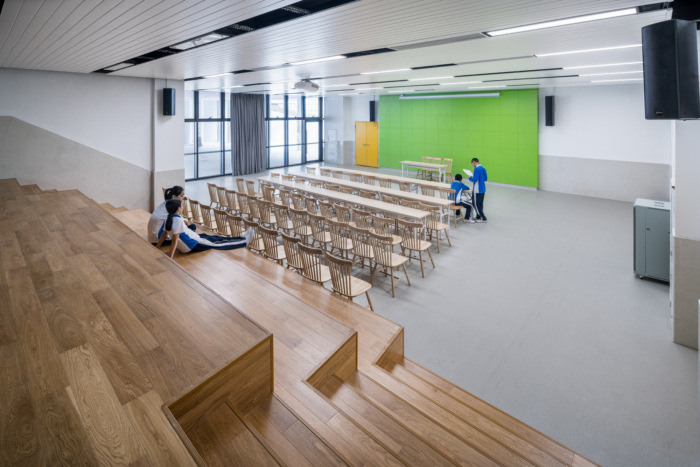Longyuan School
ZHUBO Design-AAO and H DESIGN collaborated to create an open learning environment for students through their nine years at Longyuan School in Shenzhen, China.
Along with times changing and urban space juxtaposition, open teaching has been gradually taking place of traditional indoctrinating teaching. Such open-ended teaching requires not only indoor classrooms, but also outdoor teaching places. Based on the situation of limited urban space, unique regional culture as well as sundry education environmental requirement, how to make a school meets all the requirements of a new era is a question now.
Located in the area of Longgang Town, Longyuan School affiliated to Central China Normal University is a nine-year comprehensive campus that meets functional needs of 3,360 students in 72 classes, mainly serving the surrounding residential people. The design of the project is based on the principle of ‘creating a nature-friendly open teaching environment’. Inspired by the combination of corridors and alleys in traditional Chinese architecture and based on the principle of openness and flexibility, colorful outdoor learning, living and interactive space are created through the full use of space. Architects bring an unique green valley in the corner of urban high buildings.
Based on demand, Longyuan School has a L-shaped layout in architecture plan. On one hand, similar teaching units are placed relatively concentratedly, ensuring appropriate lighting condition in close distance and forming courtyards with different style. The courtyard is not directly landed, but placed on a splendid green slope to create a garden-like campus environment and ample activities. The indoor sports arena is placed next to the outdoor sports field, forming a clear division of active and quiet with the school’s teaching area. The administrative office building is placed at the entrance to facilitate the management of the traffic flow. Canteen is placed in the southwest corner of the site to facilitate logistics and transportation. It is also following Shenzhen’s leading wind direction, which is easy for the odor to spread out.
The main spatial layout of Longyuan School is divided into primary school teaching building, middle school teaching building, lecture theater, corridor area, gymnasium, staff dormitory building and canteen. Different functional areas connect with each other through steps, ramps, lanes, corridors and courtyards, creating an interactive teaching system with functional space that do not interfere with each other but conveniently connected.
Kids in primary school prefer more lively and diverse space forms. Instead of using traditional symbolic and concretization design techniques for children, designers use multi-form space layout on the overhead floor of the entrance of primary school to form space tunnels like in fantasy scenes. They really treat architectural space as a playground for children to play and stimulate children’s playfulness. The corridor uses a large area of blue which represents “origin” and “fantasy”, and matches with the yellow tone of the school as a whole. It is more friendly and interesting. The quiet and relaxing atmosphere forms a dynamic contrast with the liveliness of children.
The architectural form of the middle school is a cuboid space enclosed by two teaching buildings and multilayer corridors. The outer side of the building maintains the overall yellow appearance of the school. The wall facing the atrium uses simple white to reflect strong sunlight. The light blue columns enclosing a small leisure space and terrace. The multilayer terrace and overhead corridor connecting teaching buildings on both sides. It not only meets space requirement for traffic, but also enlarges the size of public space. In addition, it creates more outdoor places for communication and interaction among different grades.
Architect: ZHUBO Design-AAO
Interior Design: H DESIGN
Design Team: Hu Kun, Zhang Wei, Zhang Min,Rachel Guo, Zhou Fulong, Dan Peng, Qin Qinsong, Ye Suhang, Zhong Qiao, John Siu, Li Yisheng, Cao Taiming, Qu Yu, Zhu Huanhuan, Chen Pu, Li Zhuangwei, Zhong Hanlu, Chen Zhuo
Photography: Wu Qingshan, Su Shengliang

